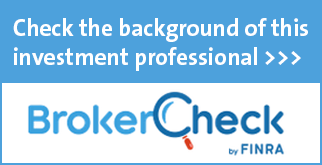Manage cash flow in retirement with multiple income streams
When you retire, you get to bid farewell to the working world. That’s the good news. The bad news? You’ll no longer have a paycheck coming in from your employer. To address that, you’ll need to piece together a steady stream of income from different retirement sources, such as Social Security, retirement accounts, and annuities. Each of these sources of income has its own benefits and tax treatments. Here’s what you need to know about how they might fit into your retirement plan.
Social Security Benefits
Monthly Social Security benefits provide a guaranteed source of income that can help you cover your expenses in retirement. The government calculates your benefit based on your average monthly earnings during your 35 highest-earning years.
You will receive your full benefit when you reach full retirement age (FRA), which varies depending on the year you were born. You can find your FRA at SSA.gov. That said, you can start claiming Social Security at age 62, but you will receive a reduced benefit. And if you can wait, your benefits will grow until you reach age 70. Up to 85% of your Social Security benefits may be taxed depending on your total income.
Retirement Accounts
Retirement accounts, including 401(k)s and traditional and Roth IRAs are tax-advantaged investment vehicles that allow you to save for retirement while you are working. You might have just one or all three kinds of accounts. Here’s a breakdown:
401(k): Many employers offer 401(k)s, which allow employees to save up to $19,500 each year (or $26,000 for those age 50 and older). Employers can also contribute to the plan, and often do so in the form of matching contributions. Contributions are made with pre-tax money and grow tax-deferred. Individuals owe income taxes when they make withdrawals after age 59 ½. Withdrawals before then are subject to income tax and a 10% early withdrawal penalty. At age 72 you must take required minimum distributions (RMDs).
Traditional IRA: In general, anyone with earned income can contribute to a traditional IRA. Individuals can save up to $6,000 each year, or $7,000 for those age 50 and older. Contributions are made with pre-tax dollars. That money can be invested and grows tax-deferred inside the account. Like 401(k)s, withdrawals after age 59 ½ are subject to income tax, and early withdrawals may be subject to a 10% penalty. At age 72, you must take RMDs.
Roth IRA: Roth IRAs have the same contribution limits as traditional IRAs. However, contributions are made after taxes are paid. The benefit is that those contributions are allowed to grow tax-free and are not subject to income tax when you withdraw them after age 59 1/2. Roth IRAs do not have RMDs. You can have both a traditional and Roth IRA at the same time, but the contribution limits are cumulative over both accounts: You cannot save more than $6,000 total between the two accounts.
Annuities
Annuities are products that you buy from an insurance company. You can purchase them with a lump sum or a series of payments. In return, the company will often promise you regular payments starting immediately or in the future, depending on the product. They also offer tax-deferred growth, and may offer death benefits for a beneficiary you name.
There are three main types of annuities—fixed, variable, and indexed—and there are many ways to customize them. They can be complicated products, so talk to your financial advisor to learn about their benefits and risks and whether they are an appropriate fit for your financial plan.
Understanding Withdrawal Strategies
There are of course other sources of retirement income, including taxable investment accounts, earnings from a part-time job, and even real estate rental income. Having a mix of sources can give your retirement income picture more stability and flexibility. Guaranteed income sources such as Social Security and annuities can help ensure you have at least your necessary expenses covered. The ability to draw from accounts with different tax treatments allows you the flexibility to manage your tax bill. One rule of thumb says that to minimize taxes retirees should draw down their taxable assets first, then their tax-deferred assets, followed by tax-free accounts.
Having a mix of income streams and understanding how they work allows you to manage your cash flow and taxes to ensure you are able to cover your retirement needs.


